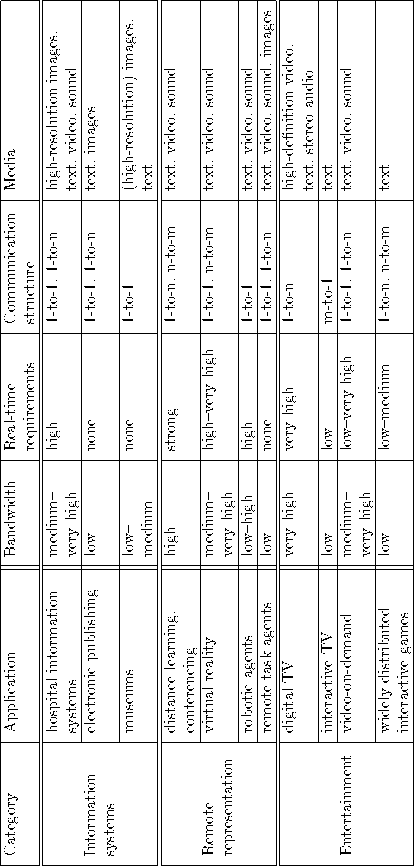 on page
on page  , taken from [Hus96, p. 17,], compares
the demands of some typical application types.
, taken from [Hus96, p. 17,], compares
the demands of some typical application types.





Applications make use of various system resources, which are provided by the different
system components. According to Steinmetz [Ste95],
a resource is a system entity that a task requires for the manipulation or presentation of
data.
Typical resources offered by a multimedia-capable system include for example the CPU, the memory management,
the file systems, network access, and special hardware like cameras or sound subsystems.
A resource is categorised as either:
The capacity of a resource is measured by a task's ability to perform its work in a given time span using that resource. To support continuous media, even systems comprising high-capacity networks and fast processors require real-time mechanisms to provide the necessary resources within the time constraints specified by the desired quality and by the type of the processed media.
For distributed multimedia applications, the required communication structure is of great importance. Traditional networking applications like file transfer generate one-to-one traffic, whereas typical multimedia applications such as video conferences or distributed virtual reality games communicate via one-to-many or even many-to-many message paths.
Table  on page
on page  , taken from [Hus96, p. 17,], compares
the demands of some typical application types.
, taken from [Hus96, p. 17,], compares
the demands of some typical application types.

Table: Requirements of different multimedia application classes.